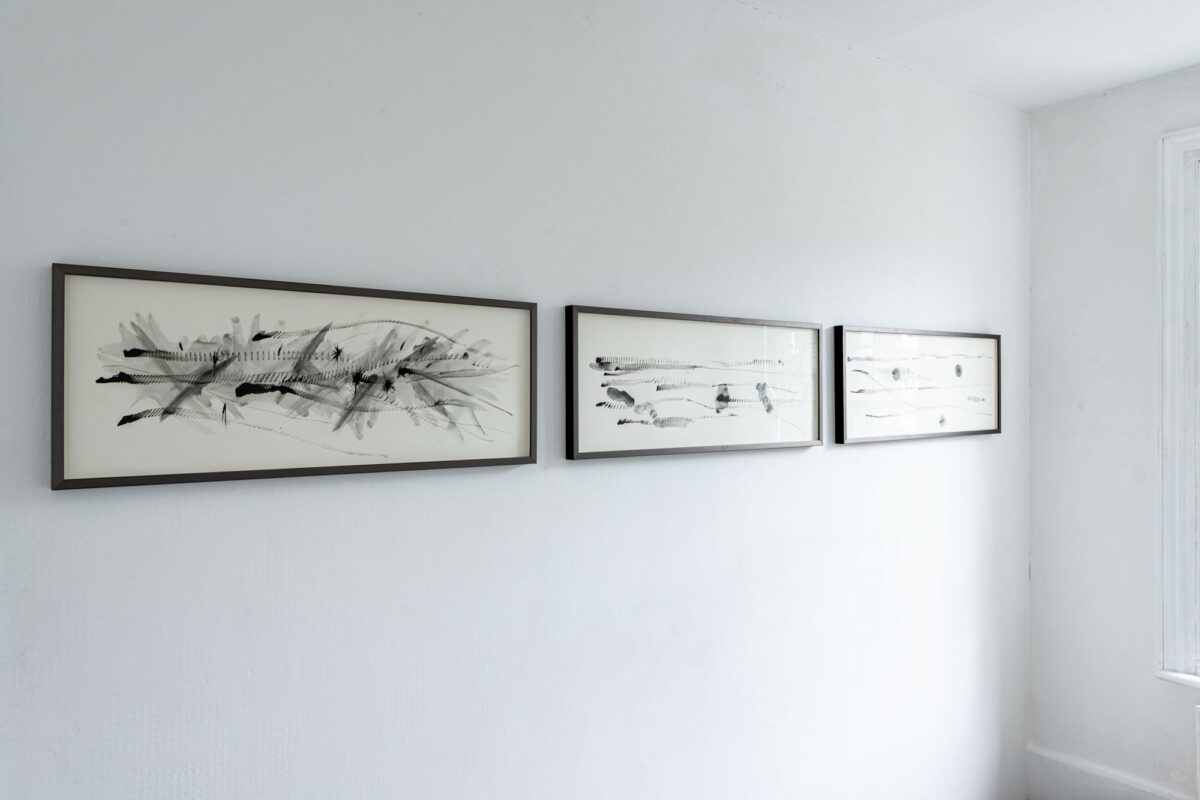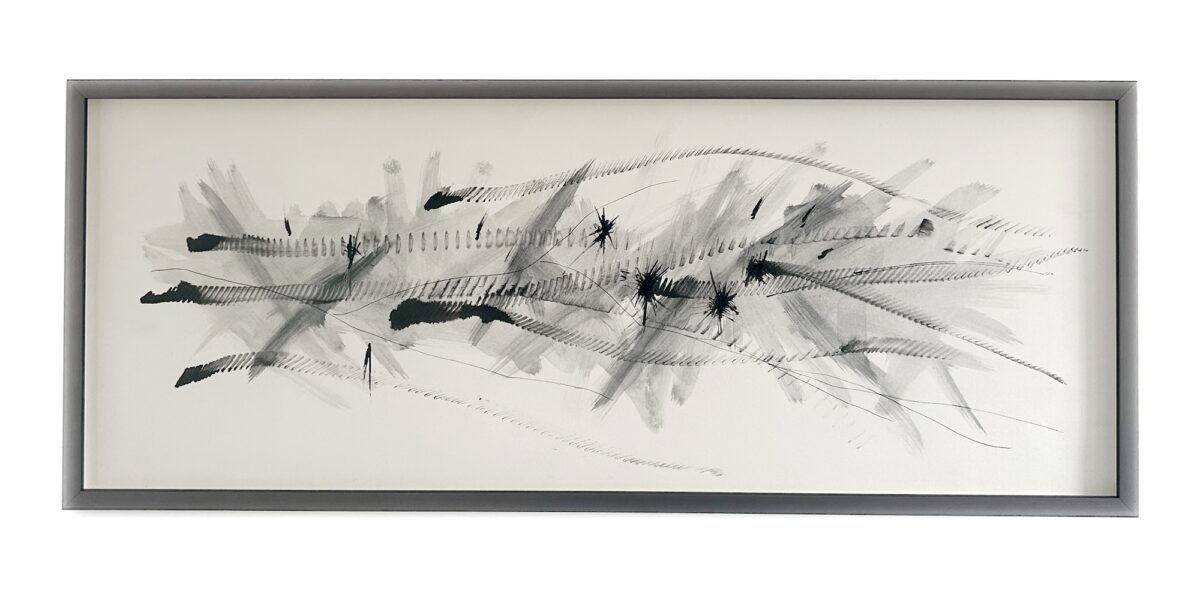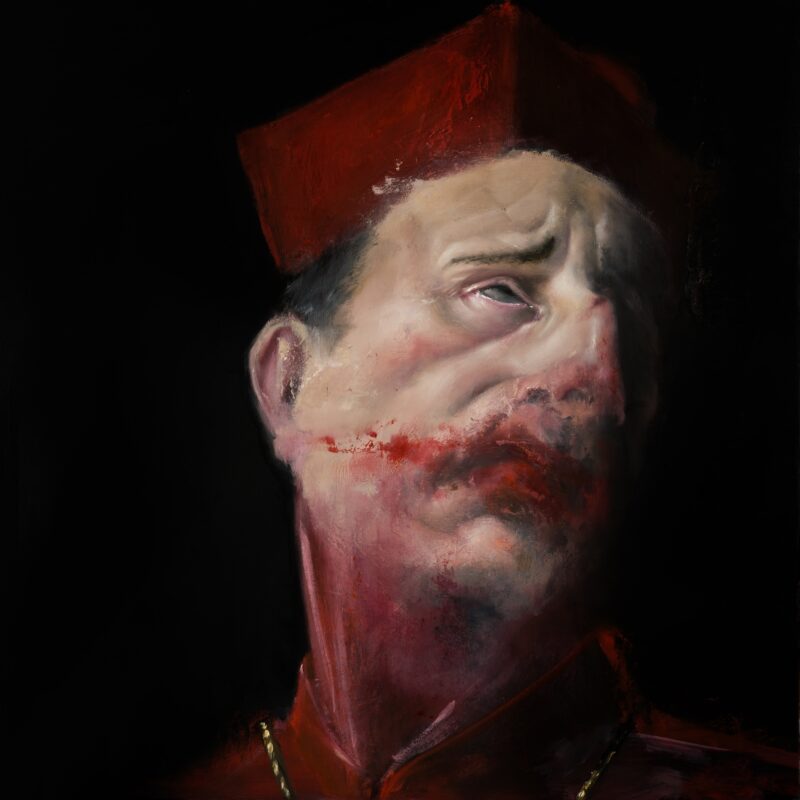Artist Dom Bouffard sat down with the curator of his solo exhibition Tally de Orellana to talk about his artistic practice his music background and [Un]Reliable Witness that has just opened at Gallery46.
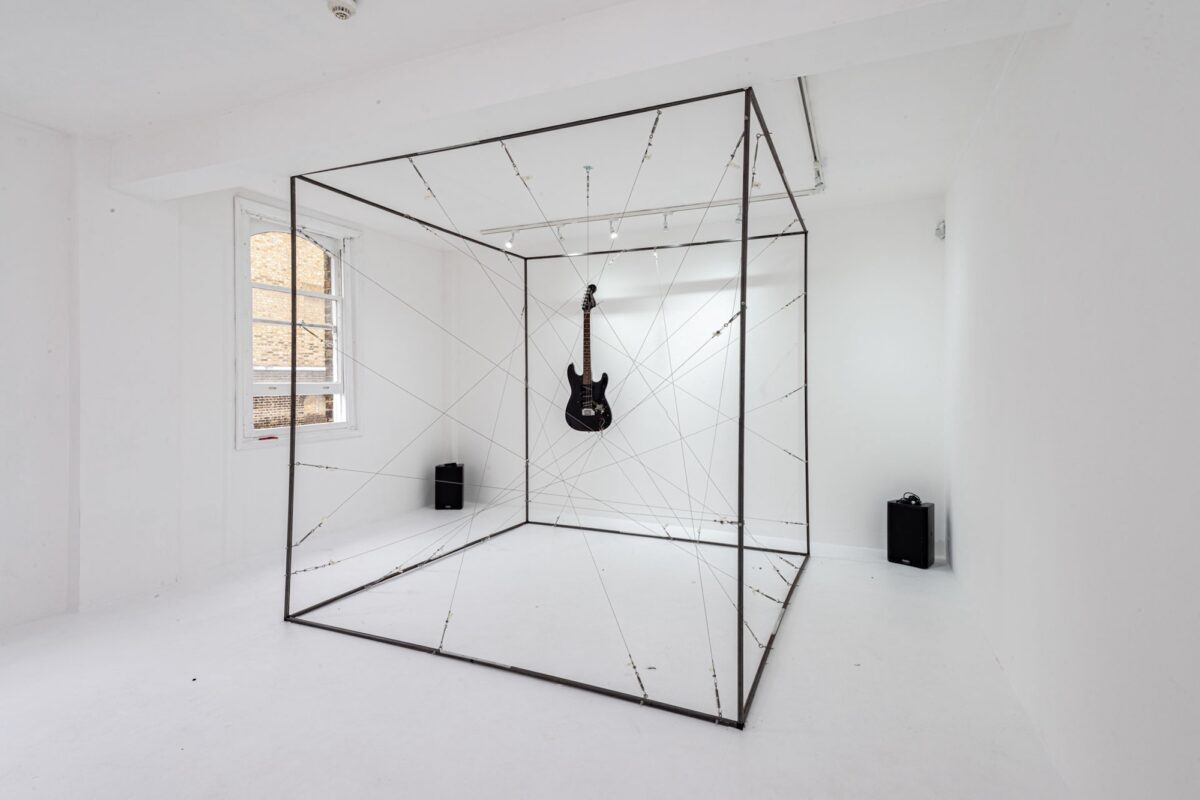
You’ve been mostly known as a musician. Can you tell us more about your interest in music and your background?
I began experimenting with sound from a very young age, removing the front of the piano to scrape and bang the strings and recording it on a portable tape recorder. I was playing gigs in a thrash metal band by the time I was 14. As a teen, it was the only thing I lived for. In the mid 90s I co-founded Sona Fariq, inspired by everything from Sonic Youth to The Prodigy, and signed to Warners, then relocated to Berlin in the mid 2000s where I worked with avant-garde theatre legend Robert Wilson at the Berliner Ensemble (Brecht’s theatre). That was like a second life, allowing me to work with people like Rufus Wainwright, Lou Reed, Coco Rosie and Lady Gaga. I began spending summers at The Watermill Center on Long Island and composing for contemporary dance, doing durational performances and making feature-length radio works. It felt like shedding this protective skin I’d always worn and was gradually finding what was underneath it.
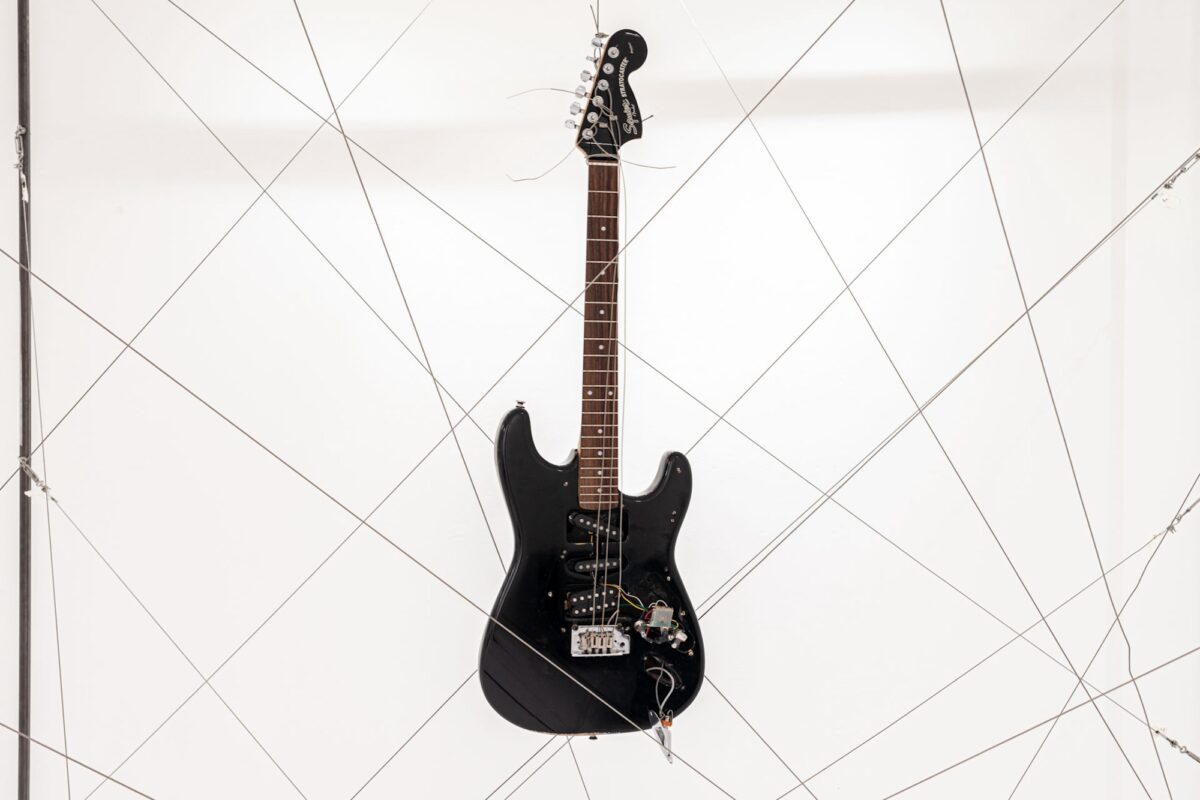
Can you tell us more about how you started your visual work? What about the relationship between the visual and the musical in your practice?
I began making ‘sound drawings’ as a way of transcribing or composing music using ‘prepared’ instruments and ‘extended techniques’, which means modifying the way you play to create unusual tonalities instead of conventional notes. During residencies at Mahler & Lewitt Studios in Spoleto and Worlding Project in London, I began to explore the visual world more: drawings, sculptures, words, and I gradually began to feel some kind of immersive language opening up. At the same time, I was trying to process traumas from my childhood,and as I was playing with different media, with space, time, sound, light, it was as if everything began to convergeinto a kind of mycorrhizal network where everything was related to everything else. Sothat’s the feeling I’ve tried to convey in this exhibition.

In your latest exhibition [Un]Reliable Witness, you stated that you drew on your own experience to create the series of works on view. What is biographical in your work?
My family are Pied Noirs, people of European descent who lived in French (colonial) Algeria until the war, which technically ended in 1962. They had to leave everything behind and became refugees in France. That set off a chain of events which had profound and very real reverberations in my life, and which continue to manifest themselves. Two years ago I met Dr Pablo de Orellana, professor at King’s College London’s department of War Studies. We talked about my family history in the Algerian War and his family’s history under Pinochet’s regime in Chile, and things began to take on a political aspect, which is how ‘Echo Effect’, the central sculpture / sound installation, began to take shape.
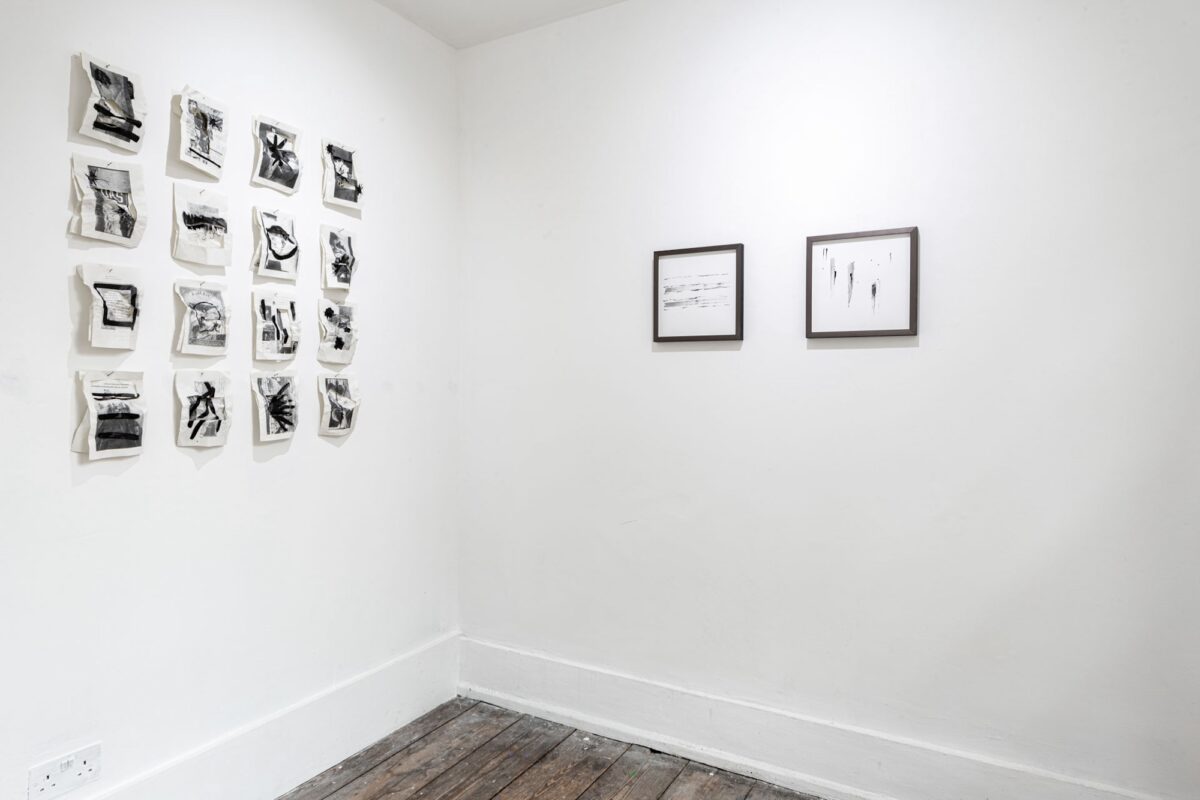
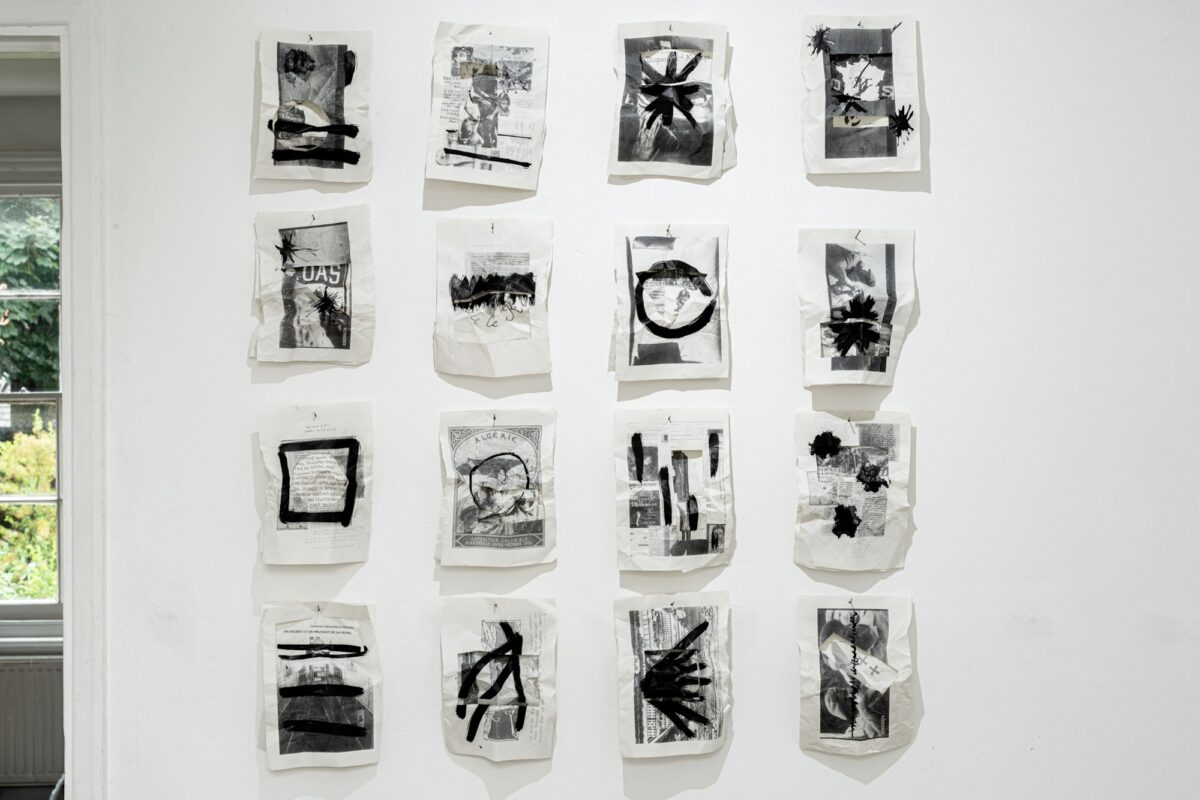
This exhibition revolves around the themes of Post-Memory and Intergenerational Trauma. How do you explore these topics and how does it lead to the artworks we see?
The ‘Echo Effect’ piece operates on a number of levels. The sculpture visually references a particular atrocity from the Algerian war, the chaotic web which suspends it is littered with assembled archival images, defaced with my own marks, a process I call ‘marking the marks’ and which represents a kind of ownership or even revenge. The action of hanging these pieces generates sound through the physical frame of the sculpture, which is fed into a bespoke computer algorithm, which samples, then randomly processes and replays the sounds back into the room via a surround sound system. These sounds are then also ‘re-heard’ by the sculpture and so they also become part of this complex, evolving tapestry of unreliable memories.
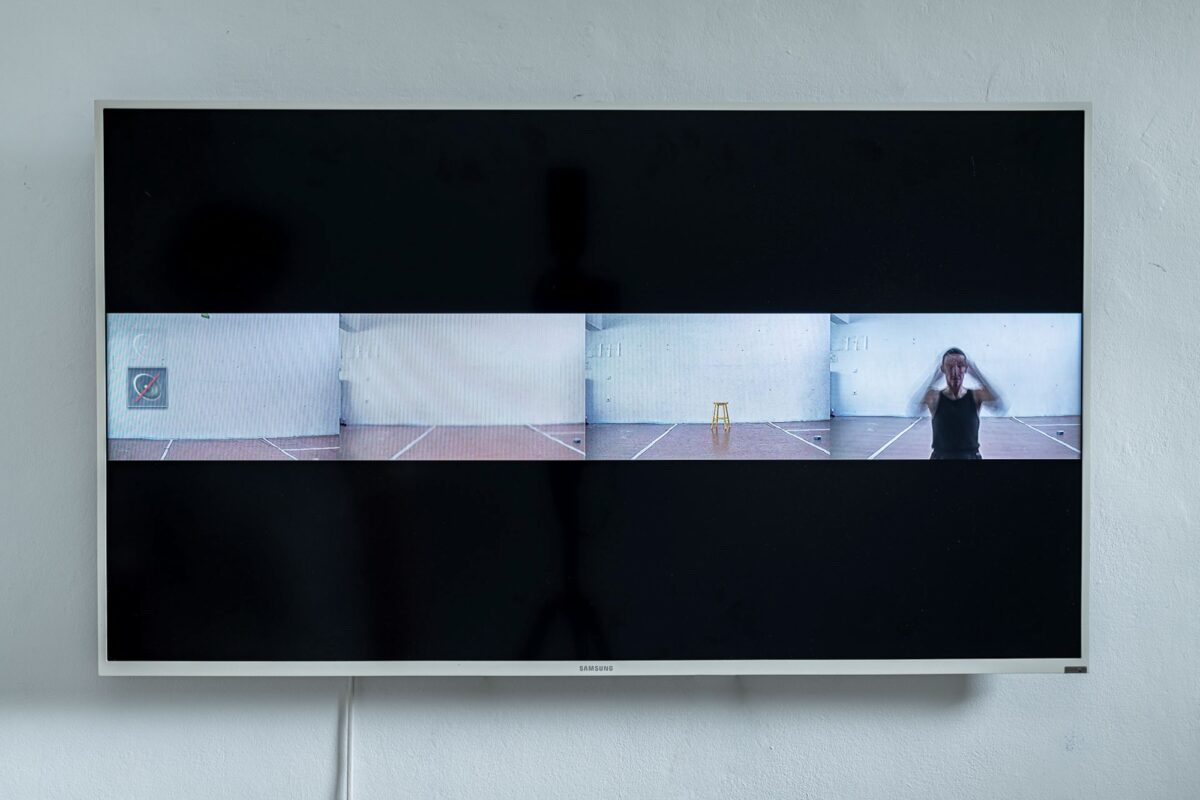
There is a participative quality to your work, can you tell us more how that came about?
When you meet someone who can relate to a powerful experience you’ve had, maybe something deeply buried, you can experience a sense of connection which is like a waterfall or a flood of emotions, as if somethingis being unblocked. This work begins, for me, with my own experiences, but my hope is that the audience will find something that they can use to process their own stories. To be active is something totally different to being passive, it’s empowering, you learn from your own activity, that’s a pedagogical principle. I felt from the very start that a fixed work, something immutable and locked to one person’s perspective, was inappropriate for this kind of project, the work should reflect both the chaos and the positive potential that we can all experience in our lives. I saw a clip on instagram of the poet Maya Angelou saying that in life, the great endeavour is to get out at least partly intact, and that it is this effort, not the solution, that is significant.
This exhibition has involved many people, not only in the making but you also have a very wide programming of events bringing in other organisations. Can you tell us how it came about and how was your experience working in so many collaborations?
Martin J Tickner at GALLERY46 has been incredibly supportive from the start. Following an introduction from the designer Pauric Sweeney, Martin and I talked about my idea and he invited me to build the exhibition. A little further down the line I was joined by the show’s curator Tally de Orellana, who has been like my comrade-in-arms on this project for the last half a year. As I already mentioned, Dr Pablo de Orellana was integral to the ‘Echo Effect’ installation as was Nick Burge, a frequent collaborator of mine in the sound art world, who did the algorithm programming. There is a video featuring dancer Marianna Kavallieratos, who I have co-created many dance pieces with and a text-sound piece, read by my friend Helga Davis, who is a very well known name in the New York art and music scenes. We were very keen to reach out to individuals and organisations with important voices on the subjects addressed, so we hare been running a special program of free events including a performance by dancer Paris Crossley in dialogue with the works, a discussion with Christiana Spens, author of ‘The Fear’ and Dr de Orellana, a workshop run by Bobby Lloyd, CEO of Art Refuge, who make art therapy available to displaced people, featuring performances by poet Josephine Carter and Kurdish artist and filmmaker Raman Feiz. Right now we’re actually beginning to receive requests to be part of the program, which is incredible, so we’ll be adding more events in the coming couple of weeks.
7. After this, what is next?
I have a number of current projects: an art documentary with film editor Fred Baillod (my cousin), a major project with King’s College London’s Department of War Studies, a hybrid ‘opera’ with Italian artist Adelaide Cioni and I’m devising a performance piece about children of prisoners. My ‘lockdown’ album ‘Killing Horizon’ (a collaboration with American composer-violinist Bryan Senti) is coming out on Naïve Records in October.
I’m also interested in exploring other subjects. Neurodiversity is a topic I am constantly drawn to, partly for personal reasons and also because I think it’s a fascinating and emerging subject with huge implications with how we contextualise society. Also, I’m very fluid in my nature, like an unstable element but I’m beginning to embrace it and look for the strengths rather than the problems with it. That may well be another area of research. I have a feeling that these may be subjects with are better approached through performance, and I’m excited to start experimenting.
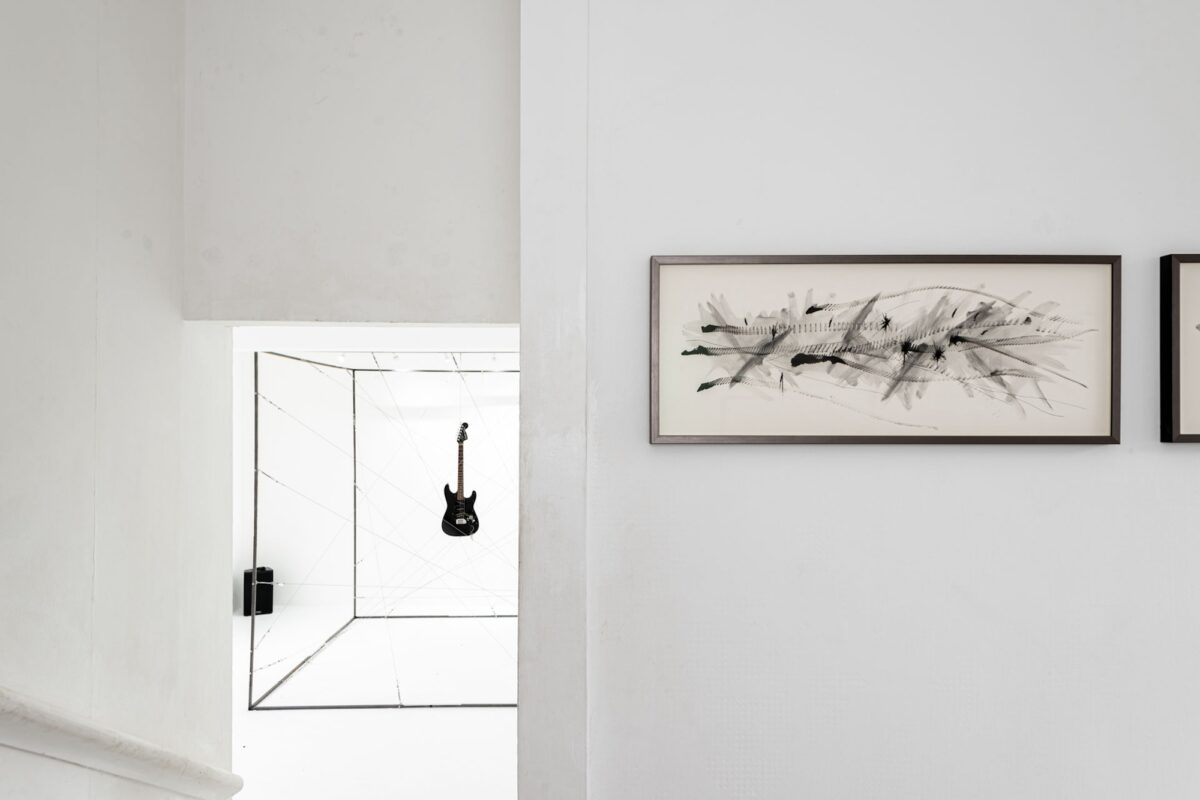
Dom Bouffard, [Un]Reliable Witness, 4th July – 23rd July 2024 Gallery 46
curated by Tally de Orellana
About the artist
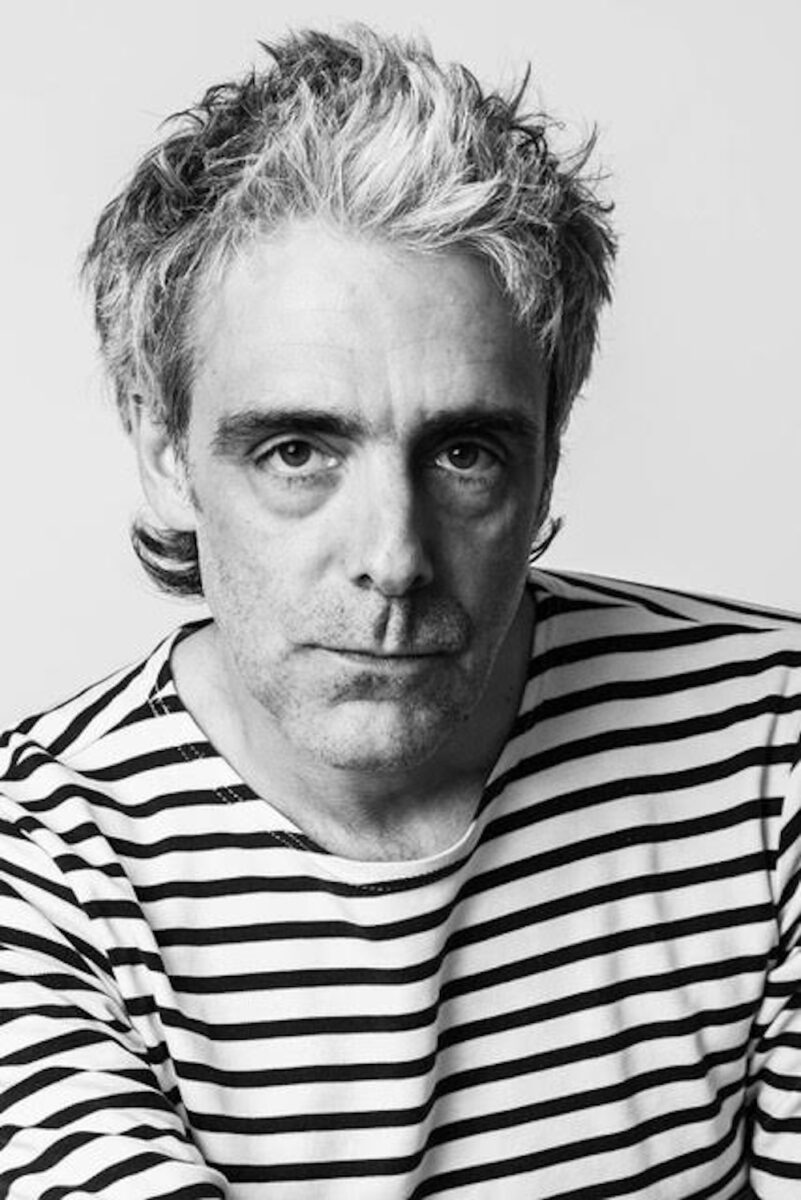
Dom Bouffard is an Anglo-French-Algerian artist and composer whose practice combines sound, sculpture, drawing, text, video and performance.
His work delves into notions of Post-Memory and Inherited Trauma, while drawing deeply on his own family’s experiences as refugees from the Algerian War of Independence, and later as mercenaries in subsequent conflicts. Bouffard maps the ways in which traumatic experiences inform and reform across geographies and generations, and how the personal becomes the political. His research and experimental work range from large scale installations to the development of ‘sound drawing’, sonic hieroglyphs acting both as musical symbols and as a form of cathartic processing.
A self taught musician, in the early 2000’s he was a member of the UK alternative rock bands Sona Fariq and Queen Adreena, later working with Lou Reed, Rufus Wainwright and Coco Rosie. He has collaborated on numerous projects with legendary theatre artist Robert Wilson, including Flying – a video portrait of Lady Gaga which was exhibited in the Mus?e du Louvre. His radio works have garnered critical acclaim, being shortlisted for the Karl Szcuka and Kriegsblinden prizes and his compositions have been performed by major interpreters including Ludi Quartet Kernow and Sergio Sorrentino. His drawings are currently in private collections throughout the UK, Europe and the US.
He holds an MMus in Music (Creative Practice) from Goldsmiths University of London.
